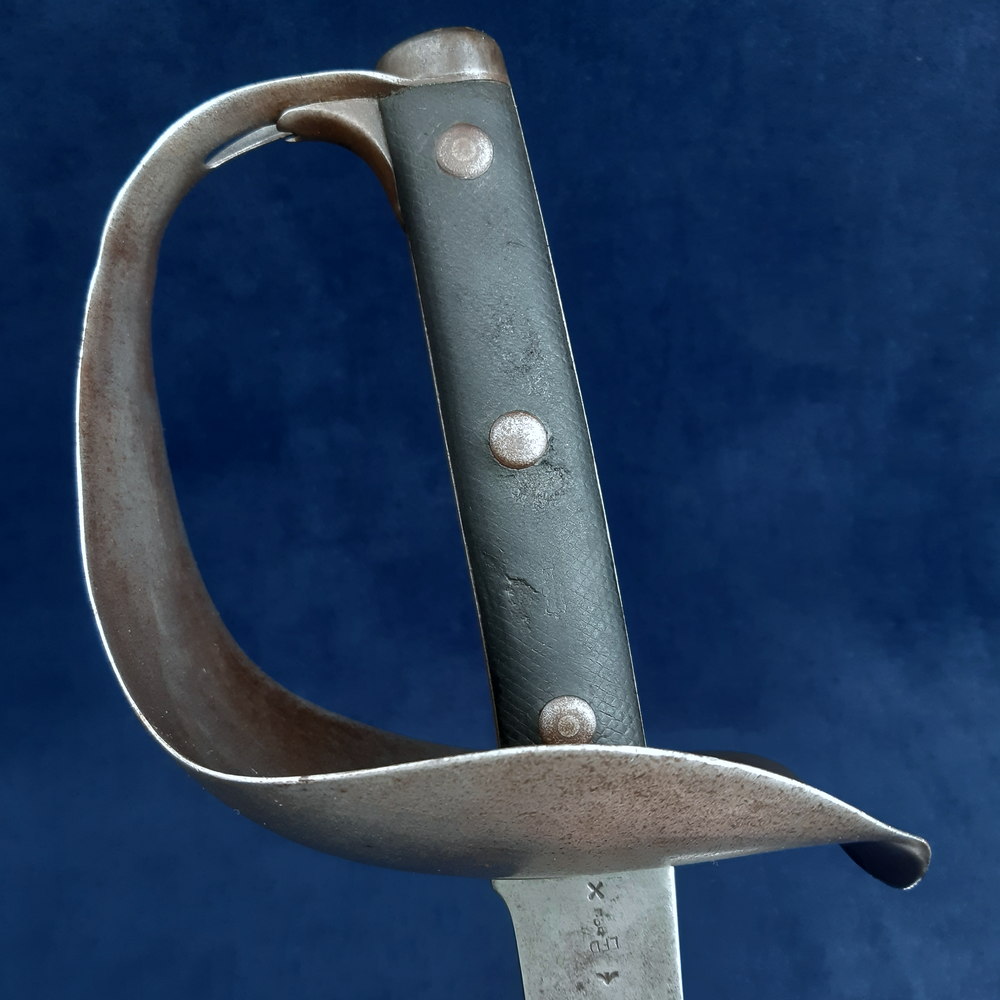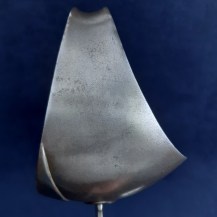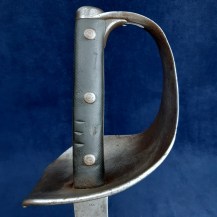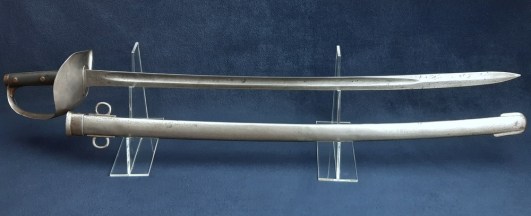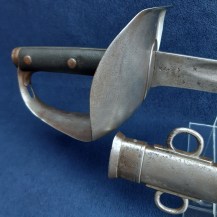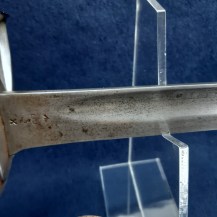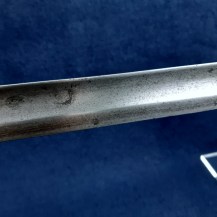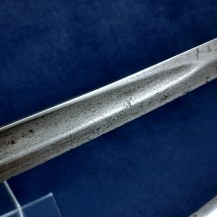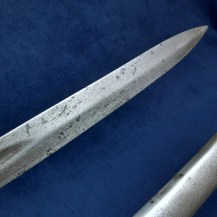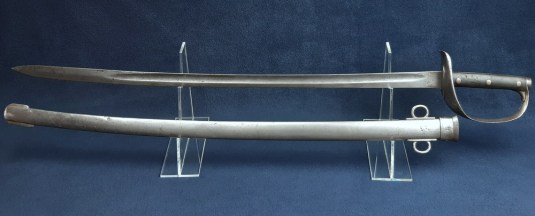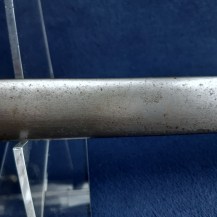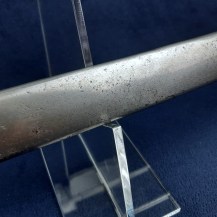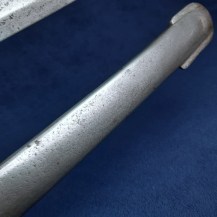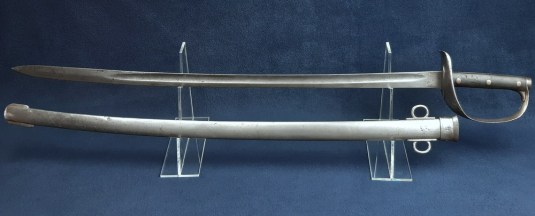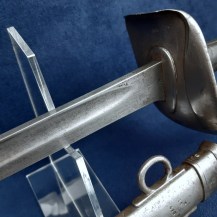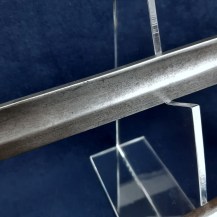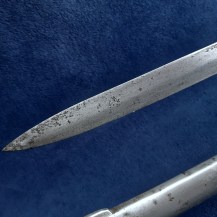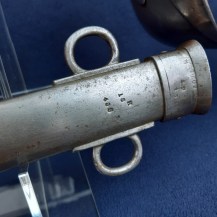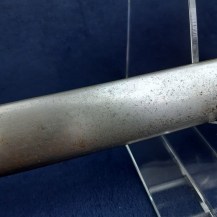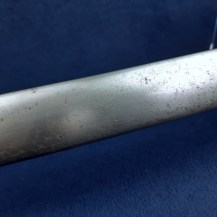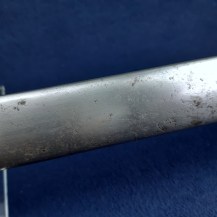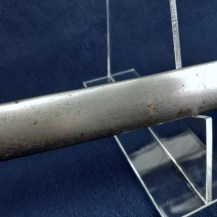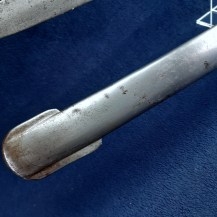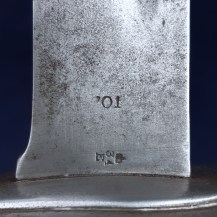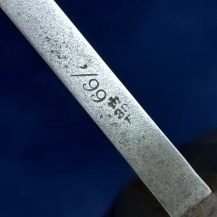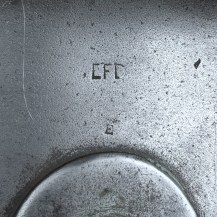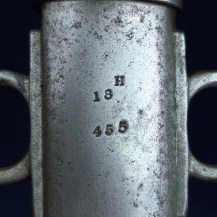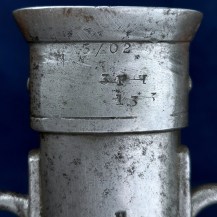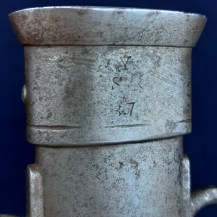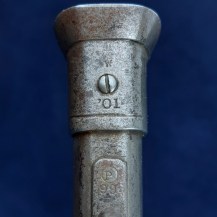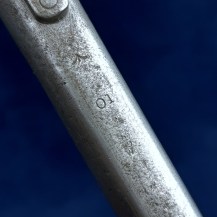British 1899 Pattern Cavalry Trooper’s Sword, 18th Hussars and Surrey Yeomanry
Curved single-fullered blade with spear point, Steel bowl guard with turned-over inside edge, black pressed leather grips secured to the exposed full-width tang with three large rivets, steel pommel. No washer. Steel scabbard with two fixed hanging rings on opposing sides just below the throat piece.
The ricasso of the blade is stamped on one side with a broad arrow War Department mark, the maker’s mark ‘EFD’ for the Royal Small Arms Factory at Enfield, a crown inspection mark with ‘E’ for Enfield, and an ‘X’ indicating that the blade passed a manufacturer’s bending test. The ricasso is stamped on the other side with ‘01, its manufacture date, and another crown inspection mark with ‘E’. The spine of the blade is stamped with ‘/99, its pattern, and another Enfield crown inspection mark.
The outside of the guard is stamped with ‘EFD’ and another Enfield crown inspection stamp. The body of the scabbard is stamped on one side with the unit mark ’18 H’ indicating the 18th Hussars. The throat piece of the scabbard is stamped on the face side with the issue date ‘5 / 02’, another unit mark ‘3 P H’ and serial number ‘133’. This unit mark and number have been cancelled with strikethroughs. I am not certain which regiment this signifies. It is stamped on the other side with ‘Y’ over ‘S R’, over ‘37’ (or possibly 87) indicating the Surrey Yeomanry.
The throat piece of the scabbard is further stamped on the spine side with ’01, the manufacture date, and a crown inspection mark with ‘W’ for Wilkinson. The fixed hanging ring is stamped with ‘P 99’, the pattern. The body of the scabbard is stamped on the spine side with another broad arrow, another ’01 date, and other Wilkinson crown inspection mark.
Cavalry swords were typically handed down from regular cavalry units to yeomanry as they wore out or the pattern was replaced. As only the scabbard of this example is marked, one should note that it and the sword might not be an original pair, although their production dates are the same. The sword’s hilt shows signs of past repolishing, which may have removed unit markings in the usual position inside the hilt.
The 1899 Pattern cavalry trooper’s sword was introduced on the 19th October 1899, eight days after the Second Boer War broke out. It was intended to be a refinement on the 1890 Pattern, with a slightly shorter blade, greater protection for the hand and a longer grip. Users generally considered it on the heavy side and much more effective in the thrust than the cut: this cemented the growing consensus that cavalry swords should be built entirely for thrusting.

